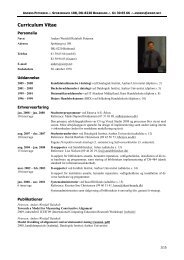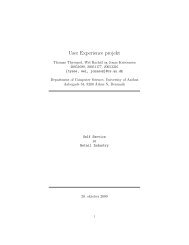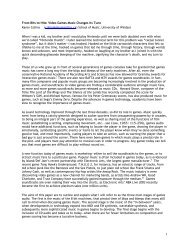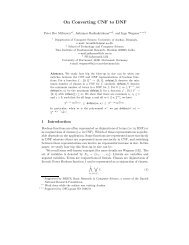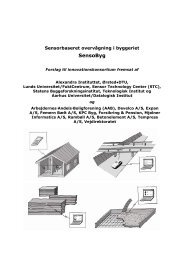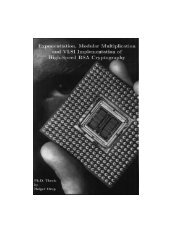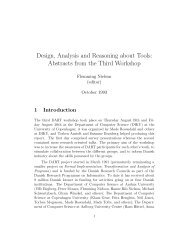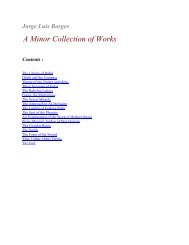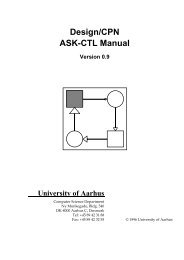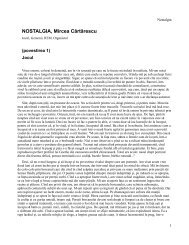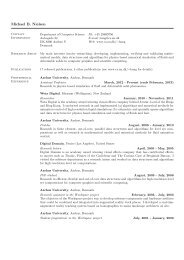towards a provotyping approach in systems development
towards a provotyping approach in systems development
towards a provotyping approach in systems development
You also want an ePaper? Increase the reach of your titles
YUMPU automatically turns print PDFs into web optimized ePapers that Google loves.
1 Introduction<br />
Systems developers, engaged <strong>in</strong> develop<strong>in</strong>g new computer <strong>systems</strong> for an<br />
organization, are faced with a complex task. One reason for this complexity<br />
is the twofold nature of the demands on the system under <strong>development</strong>. On<br />
the one hand, it must fit <strong>in</strong>to and support exist<strong>in</strong>g practice, <strong>in</strong> order to be<br />
used. On the other hand, the very reason for engagement is the need for<br />
changes (<strong>in</strong>clud<strong>in</strong>g a new computer system).<br />
This problem is one <strong>in</strong>stance of the more general contradiction between<br />
tradition and transcendence. Pelle Ehn, <strong>in</strong> his doctoral thesis Work-oriented<br />
Design of Computer Artifacts (Ehn 1988), gives an account of some of the<br />
dimensions of this contradiction.<br />
One can focus on tradition or transcendence <strong>in</strong> the artifacts to<br />
be used. Should a word processor be designed as a traditional<br />
typewriter or as someth<strong>in</strong>g totally new? Another dimension is<br />
professional competence. Should the ‘old’ skills of typographers<br />
be what is designed for or should ‘new’ knowledge replace these<br />
skills <strong>in</strong> future use? Along the same dimension is division of labor<br />
and cooperation. Should the new design support the traditional<br />
organization <strong>in</strong> a compos<strong>in</strong>g room or suggest new ways of cooperation<br />
between typographers and journalists? There is also<br />
the contradiction between tradition and transcendence <strong>in</strong> the objects<br />
or use values to be produced. Should the design support<br />
the traditional services a library has produced or should it support<br />
completely new services and even new clients. Tradition or<br />
transcendence, that is the question <strong>in</strong> design. (Ehn 1988, p. 129)<br />
One can focus on tradition or transcendence, but the question is always<br />
that of tradition and transcendence—we are always to some degree bound <strong>in</strong><br />
our tradition and, at the same time, have to transcend the present <strong>in</strong> order<br />
to solve our problems.<br />
The dimensions <strong>in</strong> Ehn’s elaboration of the contradiction between tradition<br />
and transcendence each concerns what to develop. This paper focuses<br />
more on the problem of how to f<strong>in</strong>d out. In this respect the contradiction<br />
can be reformulated <strong>in</strong> more operational terms: How do we on the one hand,<br />
devise qualitativelynew <strong>systems</strong>, and on the other hand, ensure their usability<strong>in</strong><br />
the given practice. This is the basic question addressed <strong>in</strong> this paper.<br />
2




